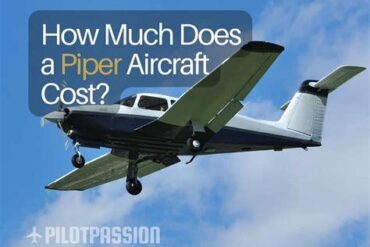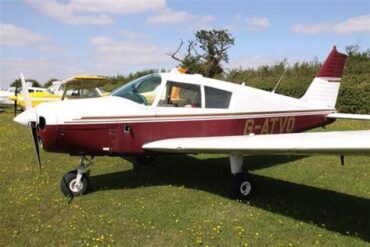The Piper Meridian is a remarkable aircraft that has gained a reputation for its performance, comfort, and efficiency. As we explore the price and operating costs associated with owning and flying this aircraft, we will delve into various factors that contribute to its overall value.
Overview of the Piper Meridian
The Piper Meridian is a single-engine turboprop aircraft designed for personal and business travel. With its sleek design and advanced technology, it offers an impressive cruising speed of approximately 200 knots and a range of around 1,000 nautical miles. This makes it an ideal choice for those looking to travel quickly and efficiently over medium distances.
Purchase Price of the Piper Meridian
When considering the purchase price of a Piper Meridian, it’s essential to account for several variables. As of the latest market analysis, the price of a new Piper Meridian typically ranges from $2 million to $3 million. However, prices can vary based on factors such as configuration, avionics, and additional features.
For buyers interested in pre-owned models, the price can fluctuate significantly. Depending on the aircraft’s age, condition, and total flight hours, the resale value can range from $1 million to $2 million. Prospective buyers should conduct thorough research and consider engaging a professional appraiser to ensure they are making a sound investment.
Financing Options for the Piper Meridian
Financing the purchase of a Piper Meridian can be achieved through various methods. Many buyers opt for traditional bank loans or specialized aviation finance companies that understand the unique aspects of aircraft financing. Interest rates can vary widely based on creditworthiness and market conditions, but prospective buyers can expect rates to fall between 4% and 7%.
Additionally, some buyers may consider leasing options, which can provide flexibility without the long-term commitment of ownership. Leasing can also offer tax advantages, depending on the structure of the lease agreement. It’s advisable to consult with a financial advisor experienced in aviation transactions to determine the best financing strategy.
Operating Costs Overview
Owning a Piper Meridian involves several ongoing operating costs that potential owners should be aware of. These costs can be categorized into direct and indirect expenses.
Direct Operating Costs
-
Fuel Costs: The Piper Meridian is powered by the Pratt & Whitney PT6A-42A engine, which is known for its fuel efficiency. On average, the aircraft consumes about 25 gallons of fuel per hour. With fuel prices fluctuating between $5 and $8 per gallon, owners can expect to spend approximately $125 to $200 per hour on fuel alone.
-
Maintenance Costs: Regular maintenance is crucial to keeping the Piper Meridian in optimal condition. Annual inspections and scheduled maintenance can range from $15,000 to $30,000, depending on the service provider and specific requirements. Owners should also budget for unexpected repairs, which can add to overall maintenance expenses.
-
Insurance: Insurance costs for the Piper Meridian can vary significantly based on factors such as pilot experience, coverage limits, and operational use. On average, owners can expect to pay between $5,000 and $10,000 annually for comprehensive insurance coverage.
-
Pilot Costs: If the owner does not hold a valid pilot’s license, hiring a qualified pilot is necessary. The salary for a full-time pilot can range from $60,000 to $100,000 annually, depending on experience and qualifications. For part-time use, hourly rates may range from $300 to $600.
Indirect Operating Costs
-
Hangar Fees: Storing the Piper Meridian in a hangar is essential for protecting the aircraft from environmental elements. Hangar fees can vary by location, but owners should anticipate paying between $500 and $2,000 per month.
-
Taxes: Owners must also consider local and state taxes associated with aircraft ownership. These taxes can include property tax and sales tax, which can vary significantly based on jurisdiction. It is advisable to consult a tax professional familiar with aviation-related tax laws.
-
Depreciation: Like any asset, the Piper Meridian will depreciate over time. Understanding the depreciation schedule is crucial for budgeting and evaluating the aircraft’s long-term value. Typically, aircraft depreciate at an average rate of 5% to 10% per year.
Total Cost of Ownership
When calculating the total cost of ownership for the Piper Meridian, it is essential to factor in all the aforementioned expenses. Based on average operating patterns, owners can expect to incur total annual costs ranging from $150,000 to $250,000. This figure includes direct and indirect costs and provides a realistic overview of what to expect as an owner.
Benefits of Owning a Piper Meridian
Despite the costs associated with ownership, the Piper Meridian offers numerous benefits that can justify the investment. Some of these advantages include:
-
Time Savings: The speed and efficiency of the Piper Meridian allow owners to travel quickly to their desired destinations, saving valuable time compared to commercial flights.
-
Flexibility: With the ability to fly directly to smaller airports, owners can avoid the hassle of larger airports and enjoy a more personalized travel experience.
-
Comfort: The Piper Meridian is designed with passenger comfort in mind, featuring a spacious cabin and modern amenities that make every flight enjoyable.
-
Resale Value: The Piper Meridian has proven to maintain a relatively strong resale value compared to other aircraft in its class, making it a sound investment for future owners.
Conclusion
In conclusion, the Piper Meridian represents a compelling option for individuals and businesses seeking an efficient and comfortable means of air travel. While the purchase price and operating costs can be significant, the benefits of ownership, including time savings and flexibility, make it a worthwhile investment. By understanding the various costs associated with the Piper Meridian, potential owners can make informed decisions that align with their aviation needs and financial goals.


















